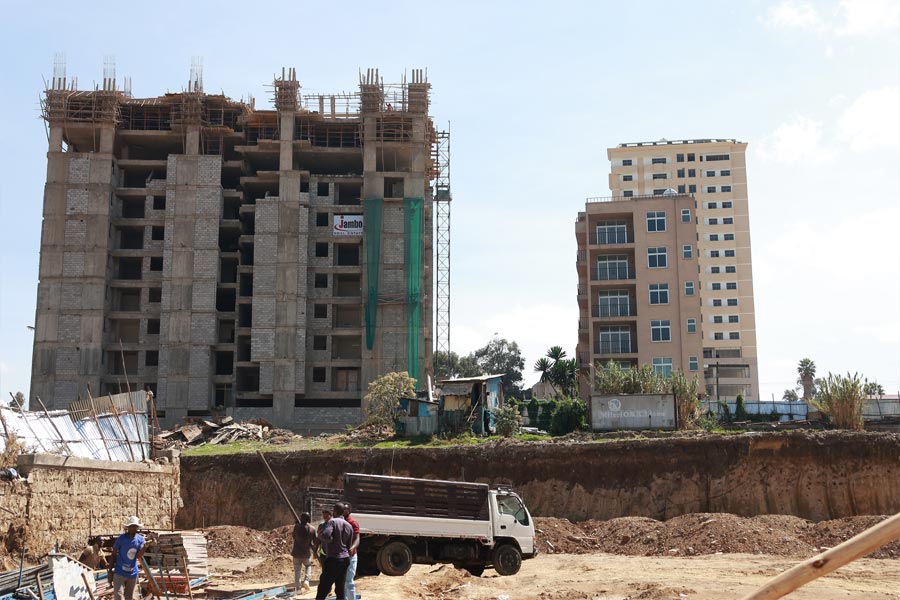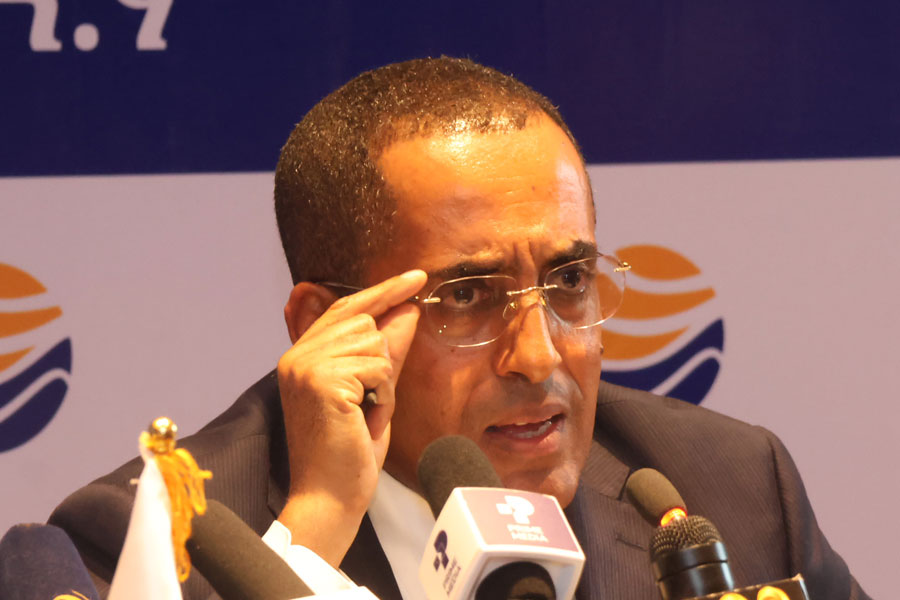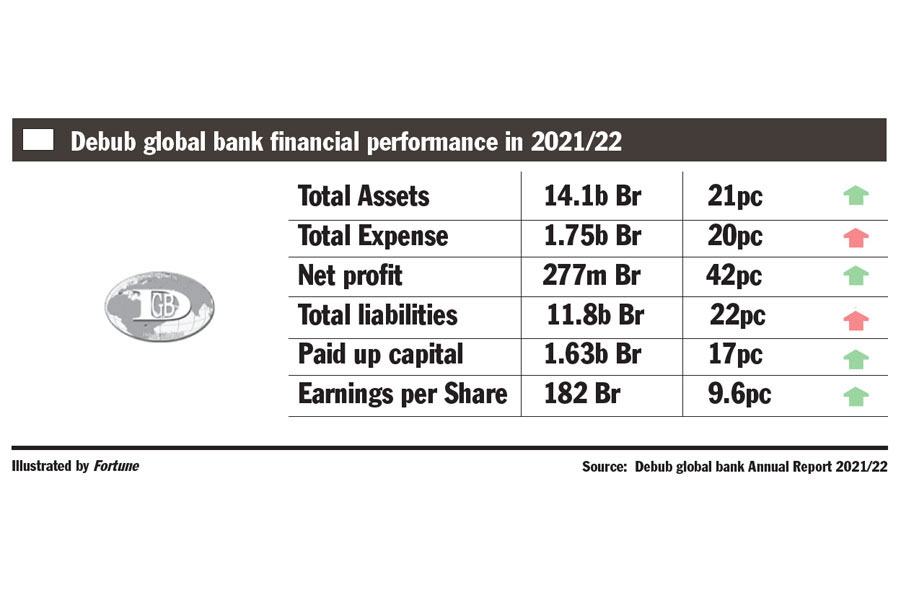
Commentaries | Feb 26,2022
Asamirew Mekonnen, 49, has been a farmer all his life. He cultivated sesame on over half of his land in Humera town, Tigray Regional State.
He recalls that he was able to harvest 1,700qtls a few years ago. But his annual harvest decreased to 600qtls which was then sold for 10,000 Br per quintal.
"The production has plummeted," he said.
A quintal of sesame that makes its way from Humera town is sold for a minimum of 1,900 dollars at the international market while trading for close to 12,000 Br at the ECX floor.
Asamirew, the breadwinner of his five children, had to find a better means to sustain his life after he relocated to Welkayit town following the northern war. He turned to cultivate soya beans and cotton on a 300hct land he won through an auction.
The farmer claims to have sowed soya beans on 160hct and was able to harvest 1,900qts but the dilemma prevailed when he did not breed much profit as he sold a quintal for only 3,000 Br. He is contemplating leaving the farm life and trying other businesses as he has suffered losses.
"I'll quit after one last try," Asamirew told Fortune.
Sesame constitutes 30pc of the total oilseed output in Ethiopia. It yielded 2.77 million hectares of land this year which has increased from 1.37 million hectares last year. However, the export volume and revenue have experienced a sharp decline in the last five years.
Close to 2.2 million quintals of sesame exports in 2019 earned the country 358 million dollars in revenues. The volume decreased by half last year, translating to 223 million dollars. This year, only 889,124qtl made its way to the international market with 155 million dollars in revenues.
The two-year war in the Tigray and Amhara regional states that account for over 70pc of nationwide sesame production steeped the slope of export revenues.
An estimated 500,000hct fields were taken out of cultivating during 2021, where thousands of farmers were displaced near the fertile 250sqm area bordering Sudan. Armed forces from the other side of the border took control of farmers' property, contributing to the lacklustre performance.
Reduced productivity, limited access to modern technology, unskilled labour and intermediaries were cited as factors gripping the sesame market.
"Many farmers were displaced during the war," said Sisay Asmare, president of the Ethiopian Pulses, Oilseeds & Spices Processors Exporters Association.
The Association was formed two decades ago to provide international market information, with nearly 1,000 members of which half are engaged in sesame export.
Sesame is one of the oilseeds the Ministry of Trade & Regional Integration demanded to apply forward trading scheme over four months ago.
Officials claim the exacerbated hoarding and contraband trade had pushed them to enforce the system that compels exporters to clear out stocks before registering for a new trade.
Exporters, however, are dismayed with the lack of support from the Ministry, claiming that they are unable to make deals with buyers before securing the product.
Hub Business Group Plc. has been exporting sesame to Isreal, Turkey and China for nine years. Last year, the company exported 1,500qtl of sesame, earning 2.5 million dollars in revenue.
General Manager, Kassah Yitbarek, said they had turned to soya beans this year after incurring losses in sesame export during the previous year. However, he claims the company could not come out profitable as he had hoped.
"The Ministry should support exporters," he said.
In the last four years, 3.5 million quintals of sesame were traded on the Ethiopian Commodity Exchange floor.
Close to three million small-scale farmers sell their commodities through the ECX floor, while the Ministry of Trade & Regional Integration is the gateway for the export. Israel takes 65pc of the sesame demand while China, UAE and Vietnam follow.
Mesfin Abebe, advisor and former director of agricultural product export trade at the Ministry, attributed the decline to the everchanging international market demand.
He cited the plummeting sesame production as a challenge.
Mesfin said China, which was the major export destination for sesame, has been slowly subsiding its demand.
The ongoing plan for export is to turn the focus on soya bean, as it yields much more productivity per hectare than sesame. The soya bean production area has increased to 7.9 million hectares this year from 1.8 million hectares of land.
"Production is necessary for export sustainability," Mesfin told Fortune.
Sesame which must be harvested within 10 days to sustain its utility requires four people to harvest one hectare of land.
Fiseha Tolossa, head of oil crops production and harvest handling at the Ministry of Agriculture, observes the harvesting season which requires a huge amount of human resources was a challenge.
"There is a gap in mechanization," he told Fortune. "Sometimes it passes the deadline and loses utility."
The Amhara Regional State produces 44pc of output, followed by Tigray and Oromia regional states with 31pc and 13pc production, respectively.
Ibrahim Akalu, 54, a farmer in Kokit town, Amhara Regional State, grows sesame once a year during the Kiremt season on his two hectares of land. The plummeting sesame production due to a lack of pesticides and fertilizers has been a progressive headache to the farmer.
This year he only managed to harvest four quintals, which decreased by half compared to the same period last year. He sells a quintal of sesame for 10,000 Br.
The sole breadwinner for his wife and two children have found the production of soybean more profitable as he was able to salvage 16qtl from one hectare. However, the surplus production has not yielded much profit, as he managed to sell a quintal of soya beans for only 3,200 Br. For Ibrahim, it is still the better option.
"I plan on expanding the land for Soya Bean this year," he said.
Soya bean has been gaining popularity in the regional state.
Elias Belay, a crop development expert at the Amhara Regional State, attributes the shift to the absence of improved sesame seed and the plummeting production in yield per hectare due to the absence of seed multiplications.
"Farmers couldn't make ends meet with sesame," he told Fortune.
According to Elias, sesame production per hectare amounts to five to seven quintals, whereas the yield of soya beans can go as far as 30qtl.
Although most farmers shifted to producing soybeans, it has done little to breed their livelihoods when they have been subjected to trading the commodity at lower prices.
Teshager Abebaw, an agronomist and post-harvest specialist at the Food & Agricultural Organization of the United Nations (UNFAO), observes the crop has received little technological and industrial support from policymakers, making it lag behind genetic advancement despite its importance.
He said seed cracking, unpredictable growth habits and unsynchronised capsule ripening result in low yield.
"Genetic seed multiplication is crucial," he said.
The expert recommends high reliance on rain should be avoided through a better irrigation scheme, expanding harvest to other seasons.
Teshager argues the price threshold should be lowered by increasing production to get more export revenue.
He recommends awareness creation for farmers to use less fertilizer while growing oilseeds as it will decrease the oil content to a considerable degree.
PUBLISHED ON
May 13,2023 [ VOL
24 , NO
1202]

Commentaries | Feb 26,2022

In-Picture | Oct 13,2024

Fortune News | Aug 11,2024

Radar | Jul 11,2021

Agenda | Feb 24,2024

Fortune News | Jul 06,2025

Radar | Apr 09,2022

Commentaries | Apr 29,2023

Fortune News | Apr 15,2023

Fortune News | Jul 14,2022

Dec 22 , 2024 . By TIZITA SHEWAFERAW
Charged with transforming colossal state-owned enterprises into modern and competitiv...

Aug 18 , 2024 . By AKSAH ITALO
Although predictable Yonas Zerihun's job in the ride-hailing service is not immune to...

Jul 28 , 2024 . By TIZITA SHEWAFERAW
Unhabitual, perhaps too many, Samuel Gebreyohannes, 38, used to occasionally enjoy a couple of beers at breakfast. However, he recently swit...

Jul 13 , 2024 . By AKSAH ITALO
Investors who rely on tractors, trucks, and field vehicles for commuting, transporting commodities, and f...

Jul 5 , 2025
Six years ago, Ethiopia was the darling of international liberal commentators. A year...

Jun 28 , 2025
Meseret Damtie, the assertive auditor general, has never been shy about naming names...

Jun 21 , 2025
A well-worn adage says, “Budget is not destiny, but it is direction.” Examining t...

Jun 14 , 2025
Yet again, the Horn of Africa is bracing for trouble. A region already frayed by wars...